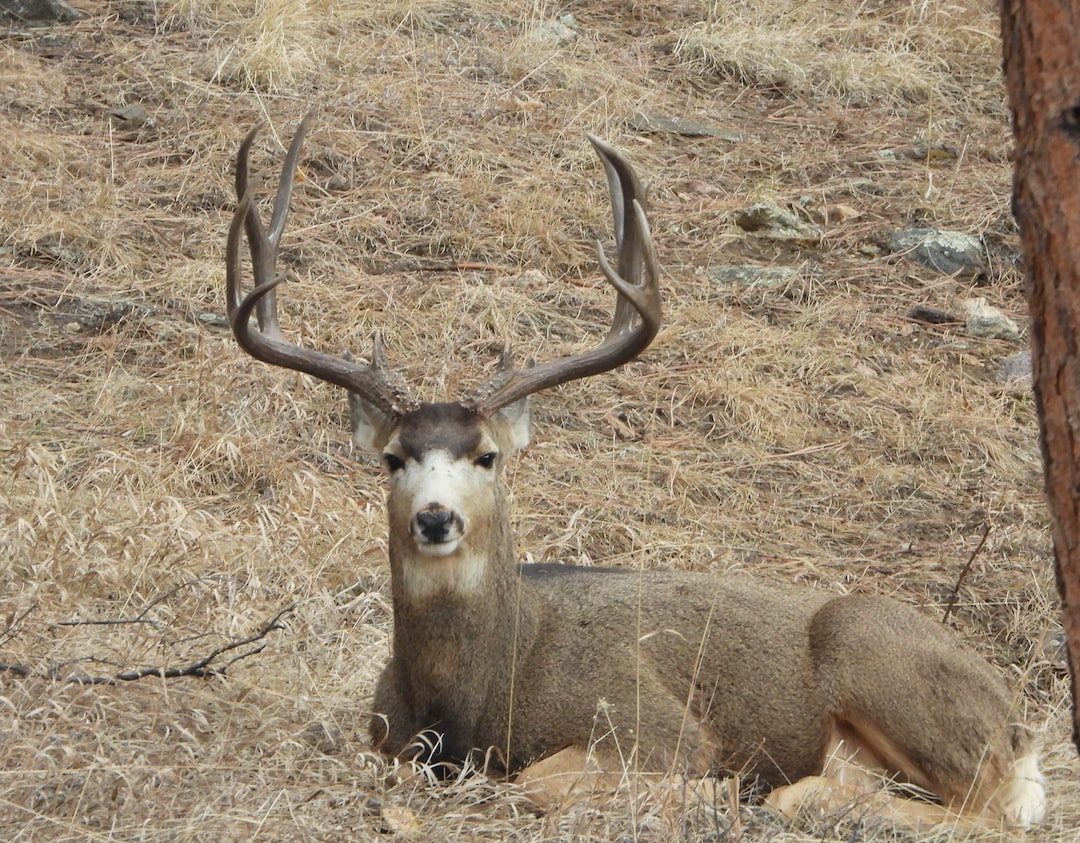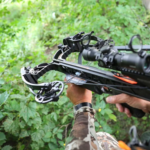So you got a deer down – congrats tag puncher!
Now what?
Hunting is a thrilling experience, but when it comes to the task of gutting a deer after you’ve taken one down, you’d be surprised how many hunters don’t know where to start.
Gutting a deer can seem daunting and overwhelming at first, especially if you’re new to hunting.
However, with the right tools and knowledge, gutting a deer doesn’t have be so intimidating.
In this blog post we will discuss everything you need to know about successfully tagging and then gutting or “field-dressing” your harvest.
If you learn best by reading instructions, read on for an in-depth guide on gutting a deer. For visual learners, here is a helpful video that breaks it down:
Tagging the Deer
Tagging a deer is THE most important first step in the hunting process after killing the animal. It allows hunters to track their kills and comply with legal requirements.
Why is it Important? Tagging a deer serves several purposes.
First, it provides proof of ownership for the hunter who killed the animal, allowing them to legally transport and consume the meat from that animal.
Second, tagging also helps wildlife officials monitor population levels of different species in order to manage game populations responsibly.
Finally, tags can help identify poachers or illegal hunters who may be killing animals without permission or outside of legal limits.
What are the Legal Requirements?
Depending on where you live, there may be specific laws regarding when and how you must tag your kill.
In most states, you need to purchase a special tag before hunting season begins; other states require that all kills be tagged immediately after harvest and reported within 24 hours. Be sure to check your local regulations before heading out into the field so that you don’t accidentally break any laws.
Following these steps will ensure that your deer is properly tagged according to state regulations, while providing valuable data about game populations in your area.
Once you have properly tagged the deer, it is time to move on to the next step in gutting a deer: gathering the necessary tools and gear.
Having the right equipment can make all of the difference when it comes to getting your deer ready for processing.
Tools and Gear Needed for Gutting a Deer
Gutting a deer is an important part of the hunting process, and having the right tools and gear on hand can make it much easier.
The most important tool for gutting a deer is a good quality hunting knife with replaceable blades. Replaceable blade hunting knives are game changers.
These knives are designed to be strong enough to handle tough tasks like cutting through hide, bone, and cartilage while still being sharp enough to slice through meat easily. It’s also helpful to have several different sizes of blades so you can choose one that fits your needs best.
In addition to a knife, there are other necessary tools and gear needed for gutting a deer.
A pair of heavy-duty gloves will protect your hands from cuts or scrapes while handling the carcass.
A bone saw or hatchet may be needed if you need to cut off antlers or hooves before transporting the animal away from where it was killed.
You should also bring along some plastic garbage bags in your hunting backpack for collecting any scraps left behind after gutting the animal as well as for storing any organs that you plan on keeping for later use in cooking or taxidermy projects.
When using knives and other tools during this process, safety should always be the top priority.
Make sure all blades are kept sharp at all times by regularly honing them with a whetstone or diamond steel rod; dull blades can cause more harm than good when trying to cut through tough material like hide or bone.
Additionally, keep your hands out of harm’s way by wearing protective gloves whenever possible; even if you don’t think something could go wrong, accidents can happen quickly when working with sharp objects.
Gutting a deer requires specialized tools and gear to ensure safety, proper hygiene, and the best possible outcome for the meat. With these essential items in hand, you can transport your harvested deer with confidence knowing that it is properly secured in your vehicle.
Methods of Transporting the Deer After Gutting
After gutting a deer, it is important to transport the carcass in a way that keeps the meat cool. This can be done by using different types of vehicles and securely tying down the carcass.
Keeping the Meat Cool During Transportation:
The most important factor when transporting a deer carcass is keeping it cool.
If possible, try to get your deer to a cooler or freezer as soon as possible after gutting it. If this isn’t an option, you will need to find another way to keep the meat from spoiling during transportation.
One way is by placing ice packs on top of and underneath the carcass in order to keep it cold while traveling. You should also avoid leaving your vehicle parked for extended periods of time with a warm animal inside, as this could cause bacteria growth which would spoil the meat quickly.
Different Types of Vehicles Used for Transporting a Deer:
There are several types of vehicles that can be used for transporting a deer carcass depending on its size and weight.
Pickup trucks are often used due to their large beds which allow plenty of room for larger animals such as elk or moose; however they may not be suitable if you have multiple smaller animals such as antelope or whitetail deer since they take up more space than necessary in these larger beds.
SUVs or vans are better suited for carrying multiple smaller animals since they provide more interior space than pickup trucks do without taking up too much extra fuel economy like box trailers do when hauling heavier loads over long distances.
Once the deer is gutted, there are several methods of transporting it safely and securely.
While some may opt for traditional vehicles such as trucks or SUVs, others may find a more unique approach to transporting their harvest – like the gutless method – to be beneficial. Let’s take a look at this alternative way of field dressing a deer next.
The Gutless Method of Field Dressing a Deer
The gutless method of field dressing a deer is an alternative way of harvesting meat from your kill without having to gut it first.
Here’s legendary elk bugler Corey Jacobsen in action:
This method involves cutting the hide and removing the backstrap, tenderloins, neck roast, and other cuts in one piece. It’s important to note that this method should only be used on deer that have been harvested quickly with minimal damage to the hide or internal organs.
What is the Gutless Method?
The gutless method requires making two incisions: one along each side of the spine starting at the base of the skull and ending at either end of its rib cage.
Once these incisions are made, you can then remove all four quarters (the front shoulders, hindquarters) as well as any other cuts such as backstraps or tenderloins in one piece by peeling away both sides of skin like a banana peel.
The gutless method offers several advantages over traditional methods when field dressing a deer.
It is much faster, resulting in quicker processing of the harvest for consumption; it is less messy since no entrails need to be removed; there is less chance of contamination since no intestines come into contact with edible parts; and transport becomes easier as all four quarters remain intact instead of being separated into individual pieces.
When it comes to field dressing a deer, the Gutless Method is an effective and efficient way to do so.
However, legal obligations must be taken into account when harvesting all meat from a deer carcass. Let’s take a look at what those regulations are and how to ensure you have harvested all of the meat properly.
Legal Obligations to Harvest All Meat from a Deer Carcass
When hunting deer, it is important to understand the legal obligations associated with harvesting all of the meat from a carcass.
In most states, hunters are required by law to harvest and make use of as much of the animal as possible.
This includes not only taking home the edible portions such as steaks and roasts but also making sure that all usable parts are collected for further processing or donation.
What are the Laws Regarding Harvesting All Meat from a Deer?
Depending on where you hunt, there may be different laws regarding how much meat must be harvested from a deer carcass.
Generally speaking, however, most states require hunters to take at least one-third of an animal’s weight in edible meat when field dressing it after killing it. This means that if you kill a 200-pound buck, you should aim to collect at least 66 pounds (one-third) of edible meat before leaving the field.
How to Ensure You Have Harvested All Meat from a Carcass?
When harvesting all usable parts from a deer carcass, it is important to follow certain steps in order to ensure that no part goes wasted or un-utilized.
First off, start by separating out any large pieces like steaks and roasts which can easily be taken home for consumption or further processing into jerky or sausage links etc. These also make great future hunting food snacks.
Next up would be collecting smaller cuts such as neck bones and organ meats which can then either be used right away or frozen for later use in soups and stews etc.
Finally make sure that any remaining bits such as hide scraps and antlers get salvaged so they don’t go wasted either.
Therefore, it is highly recommended that hunters abide by local laws when dealing with game animals so they do not face serious consequences in the future.
The last thing you want is to lose your hunting privelages just because you weren’t aware of the regulations in the state you are hunting.
FAQs in Relation to How to Gut a Deer
How long after killing a deer do you have to gut it?
It is important to gut a deer as soon as possible after killing it. Generally, the best practice is to do so within 1-2 hours of death.
This helps prevent bacteria from entering and spoiling the meat, while also reducing the risk of disease transmission. It also makes field dressing easier and more efficient since the animal will be in a relaxed state due to rigor mortis setting in.
When gutting a deer, make sure you wear gloves and use sharp knives or saws for cutting through bone. Doing this quickly and efficiently will ensure that your venison stays fresh and safe for consumption.
Can you gut a deer wrong?
Yes, it is possible to gut a deer incorrectly. Poorly executed field dressing can lead to meat spoilage and the potential spread of disease.
It’s important to take the time to properly clean and dress your game animal in order to ensure that you are harvesting safe, healthy meat for consumption.
Taking shortcuts or not following proper procedures could result in improper gutting techniques which could cause serious health risks if consumed.
Does a gut pile spook deer?
The answer to the question of whether a gut pile spooks deer is not a simple yes or no.
It depends on several factors, such as the size and location of the gut pile, how long it has been there, and what other activity is occurring in the area. In general, however, if placed properly and with minimal disturbance to the surrounding environment, a gut pile should not significantly spook deer.
If hunters are careful about where they place their gut piles and take steps to minimize human scent near them, then deer will likely become accustomed to them over time.
Should you gut a deer in the woods?
The answer to this question is a definitive yes. Gutting a deer in the woods can help reduce spoilage and prevent the spread of disease, as well as reducing the risk of attracting predators.
It’s important to take all necessary precautions when gutting a deer, such as wearing gloves and using sharp knives or tools that are designed for field dressing.
Additionally, it’s important to dispose of entrails properly by burying them away from water sources or carrying them out with you if possible. With the right knowledge and gear, gutting a deer in the woods can be done safely and efficiently.
Conclusion
It’s important to remember to tag the deer first, and then use the proper tools and gear for gutting it.
After gutting, you’ll need to transport the carcass in order to keep it cool and preserve as much meat as possible. If you’re not comfortable with traditional methods of field dressing a deer, there is also a “gutless” method that can be used instead.
Finally, make sure you are aware of all legal obligations when harvesting meat from a deer carcass – failure to do so could result in serious consequences. Gutting a deer may seem daunting at first but with some practice and knowledge, it can become second nature.



